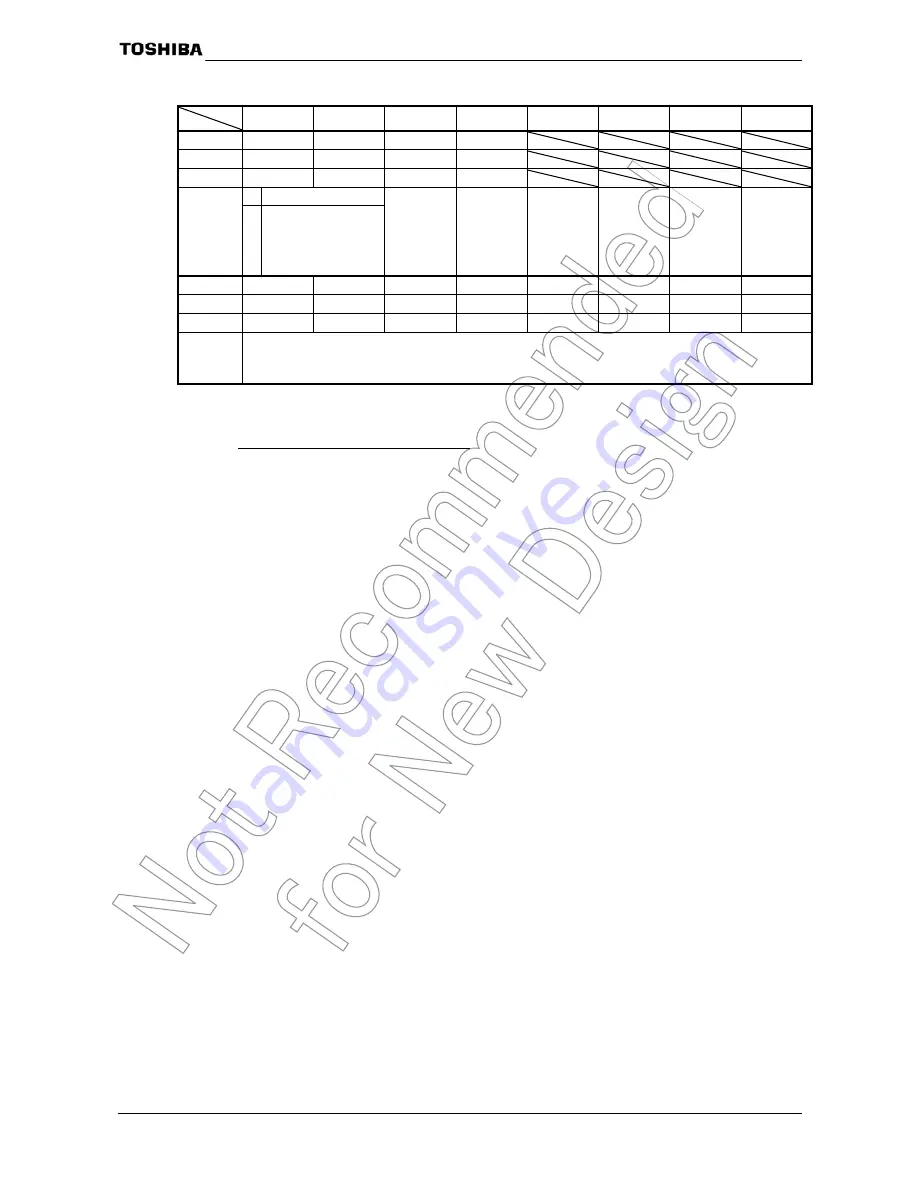
TMP91C824
91C824-16
2008-02-20
7 6 5 4 3 2 1 0
Bit symbol
ACT1 ACT0
DLUPFG
DLUPTM
Read/Write
R/W
R/W R R/W
After reset
0 0 0 0
DFM LUP select
fFPH
DFMCR0
(00E8H)
Function
00
01
10
11
STOP STOP fOSCH
RUN RUN fOSCH
RUN STOP fDFM
RUN STOP fOSCH
Lockup
status flag
0: LUP end
1: LUP not
end
Lockup time
0: 2
12
/f
OSCH
1: 2
10
/f
OSCH
Bit symbol
D7 D6 D5 D4 D3 D2 D1 D0
Read/Write
R/W R/W R/W R/W R/W R/W R/W R/W
After reset
0 0 0 1 0 0 1 1
DFMCR1
(00E9H)
Function
DFM revision
Input frequency 4 to 8.25 MHz (at 2.7 V to 3.6 V): write “0BH”
Input frequency 2 to 2.5 MHz (at 2.0 V
±
10%): write “1BH”
Figure 3.3.4 SFR for DFM
Limitation point on the use of DFM
1.
It’s prohibited to execute DFM enable/disable control in the SLOW mode (fs).
(Write to DFMCR0<ACT1:0>
=
“10”).
You should control DFM in the NORMAL mode.
2.
If you stop DFM operation during using DFM (DFMCR0<ACT1:0>
=
“10”), you
shouldn’t execute that change the clock f
DFM
to f
OSCH
and stop the DFM at the
same time. Therefore the above execution should be separated into two procedures
as showing below.
LD
(DFMCR0),
C0H
;
Change the clock f
DFM
to f
OSCH
LD
(DFMCR0), 00H
;
DFM stop
3. If you stop high-frequency oscillator during using DFM (DFMCR0<ACT1:0>
=
“10”), you should stop DFM before you stop high-frequency oscillator.
Please refer to 3.3.5 “Clock Doubler (DFM)” for the details.
















































